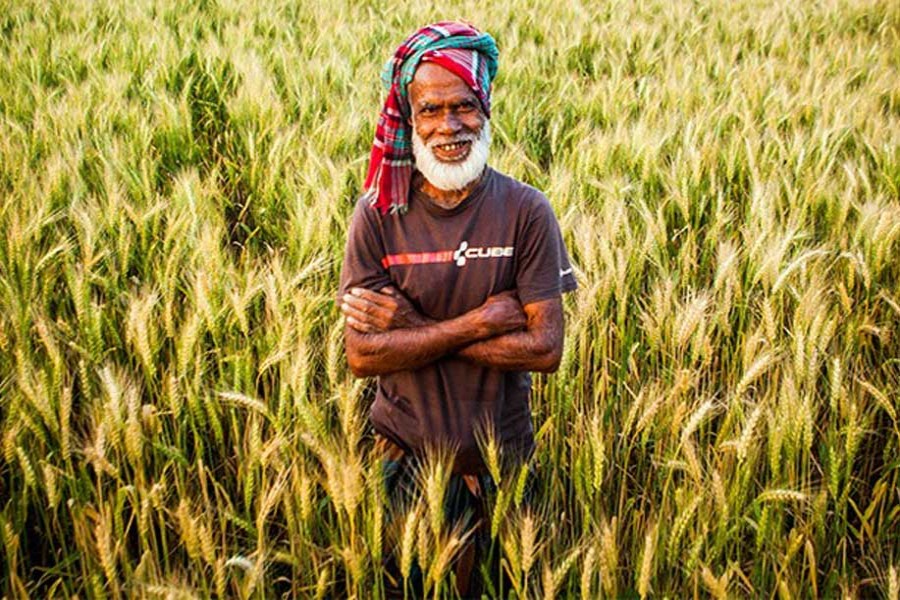The country's agriculture sector continues to experience a series of remarkable changes. Many of them remain largely unnoticed. Beginning from invention of adversity-tolerant rice varieties to introduction of new crop patterns to preparation of innovative seed beds, these initiatives work as great boosts to the agriculture sector. The launch of Farmers' Free Schools (FFS) by the Department of Agricultural Extension (DAE) is such an endeavour with enormous prospect. It was introduced, apparently as a test case, in Taraganj upazila in Rangpur district in 2013. To the delight of the DAE authorities, the schools have emerged as reliable centres for dissemination of information to poor and ignorant farmers over the past four years. The objective of the FFS is to help farmer cum students from different areas in the upazila develop skill in scientific farming, as well as ensure improvement in their socio-economic status. On both counts, the outcome appears to be quite positive.
With the country's farmers generally stuck in largely outdated -- thus non-productive -- agricultural practices, the DAE's learning centres are set to open a new chapter in their lives. The government department now runs 25 FFS in the upazila. The total number of students stands at 1,350. As has been seen from the beginning, the learners at the schools are imparted lessons in modern agricultural methods including the latest technology. The lessons are given for free. In an academic schedule lasting for six months with 50 learners at each school, the students are also taught how to engage fruitfully in fish farming, poultry and dairy and cattle rearing. Given the broad area of their curricula, the expected critical role of the FFS in rural farmers' socio-economic uplift can be understood. Already, students have presented to the media their tales of successful application of the knowledge gained at these schools. Many of them find their lot to have undergone radical changes. These success stories will, surely, draw fresh students in greater numbers to the FFS.
A remarkable aspect of these farmers' schools is the noticeable presence of women in classes. Rural women have long been demonstrating their enthusiasm for building self-reliant careers. A lot of them have later emerged as successful small and mid-level entrepreneurs. That the Taraganj FFS will produce accomplished women capable of running poultry, dairy and cattle-rearing farms is for sure. Following in their footsteps, poor people in larger numbers are getting involved with income-generating ventures. To call the changes in the upazila's socio-economic sector, courtesy of the FFS, a revolution is no overstatement. In a country with shrinking agricultural lands and rural youths compelled to take up non-agricultural, risk-laden occupations, social acceptance of initiatives like the FFS makes many feel upbeat. It has reinforced the country's essentially agricultural identity.
Following the success of Taraganj FFS, such schools should have reached many other regions of the country. Logistic constraints may have stood in the way of the replication of the project. Keeping the highly favourable response to the specialised schools in view, the DAE, and the higher authorities, need to bring the programme into wider focus. At the same time, facilities for hands-on training of students ought to be given priority. A discipline like agricultural studies cannot remain confined to classrooms only. Agricultural knowledge can be imparted to learners effectively if it is done in combination of theory with practice.


